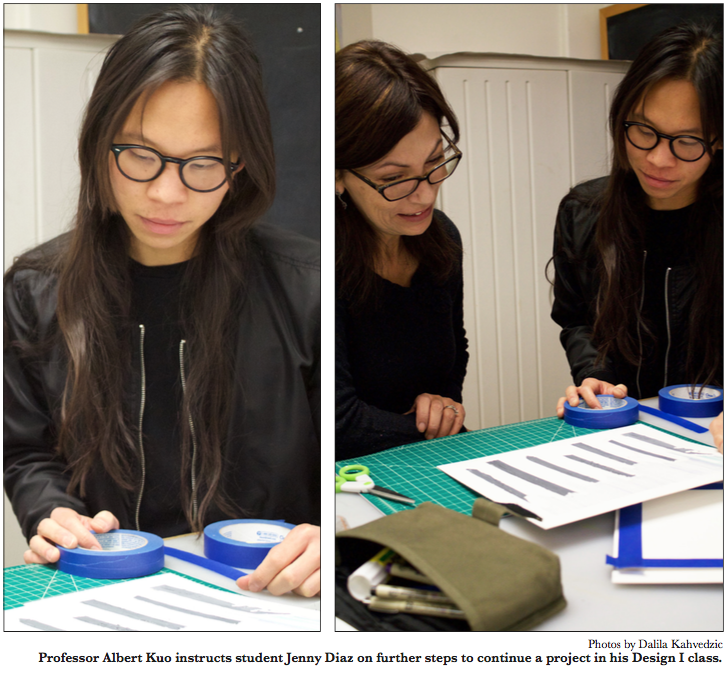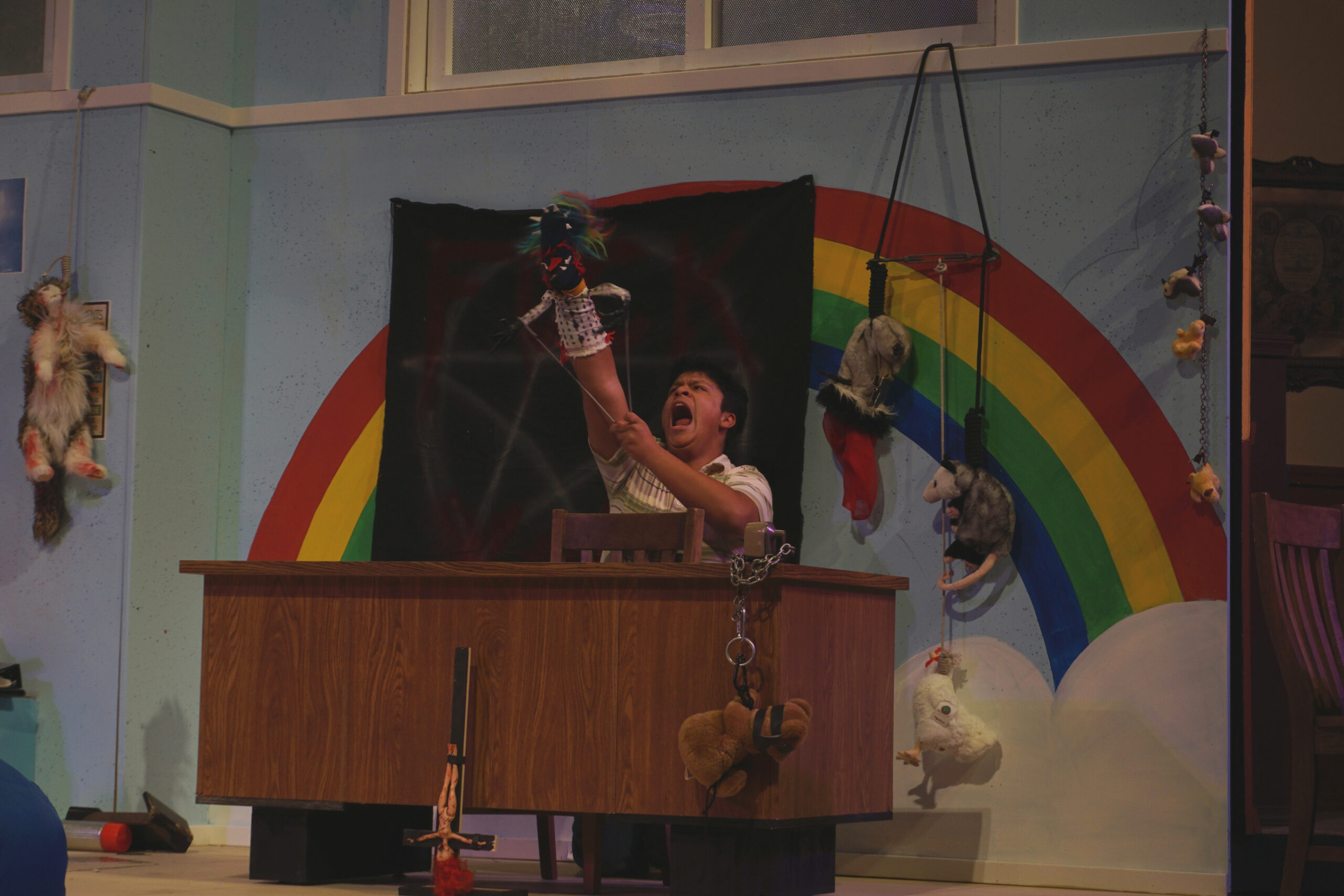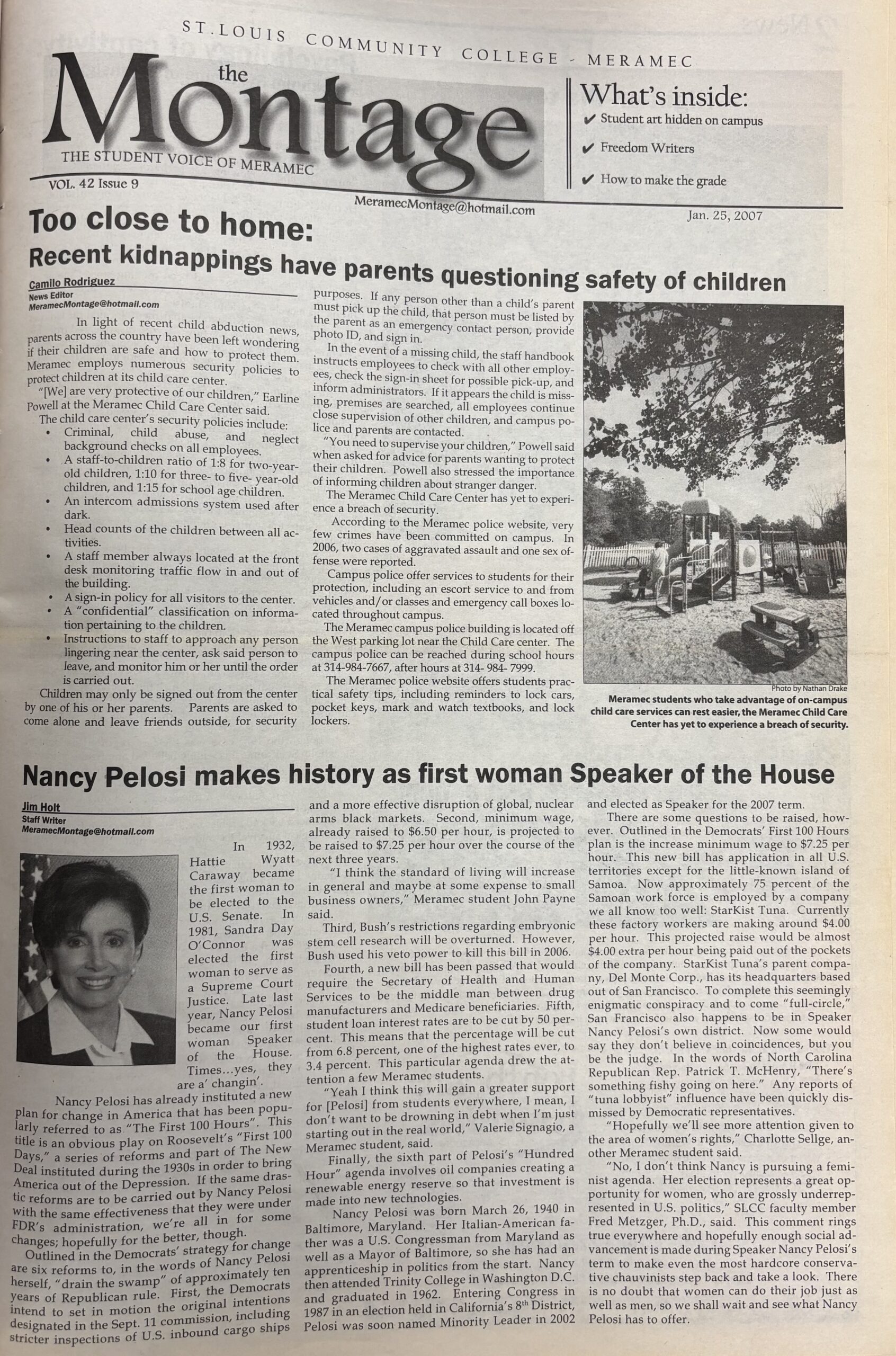Professor Albert Kuo uses artist experiences to educate students
By: DALILA KAHVEDZIC
Editor-in-Chief
STLCC–Meramec and Florissant Valley Fine Arts Professor Albert Kuo’s childhood consisted of living in two distinctly different cultures. Travels to and from Taiwan gave him a wide range of experiences, which he now applies to his teachings.
He recently began teaching as a part-time adjunct professor after years of studying various subjects as a student.
Kuo received his bachelor’s degree in fine arts and painting and a master’s degree in painting from Fontbonne University. He also received his associate degree at the University of Utrecht in Holland.
Kuo was the first person in his family to be born in the United States — his family is originally from Taiwan. His father is an architect who currently teaches at the University of Hawaii, where Kuo acquired his love of art.
“All I did was hangout with him in his work space at his architectural firm,” Kuo said. “Even in Taiwan, I would go there and study Taiwanese painting and come here and do drawing classes.”
His parents were supportive and encouraging of his decision to have a career in the arts, Kuo said.
Traveling to and from Taiwan gave Kuo a very different perspective on life.
During his years as a student, Kuo had the opportunity to study abroad at the University of Utrecht for two years.
“It was a beautiful experience to say the least,” Kuo said. “I came back here with definitely a more diverse perspective on how we should be educated as artists and about studying art in general.”
Kuo also studied music for awhile, playing on and off in Japan for four years.
“I played under different labels and was making good money. I could’ve kept doing that but it didn’t seem very fulfilling to me,” Kuo said. “It’s a seasonal thing, strangely — mostly based on when you go on tour, or record a new record or something like that.”
Music is the highest form of all the arts, Kuo said, quoting many of the artists he admires.
“It can emotionally capture us at any time and it’s also suitable for all moments in life,” Kuo said.
Kuo went on to study cooking, housing and construction and attended mixology school as well. During this same time, he said he was always interested in art and knew he wanted to create it.
The end points to all these possible careers were visible and the thought of that was unappealing, Kuo said. He decided to go back to school and study painting.
To take a life break and experience new things before graduate school is something he strongly suggests.
“Even if it’s just like a year or a few months, I think it’s healthy. It gives you a better perspective on how you care to learn,” Kuo said.
Kuo attended many different schools before coming to the decision to become a professor.
“My first choice was Rhode Island Institute of Design (RISD) and Yale University as well. All the alumni from those schools are alumni that I admire. I got into Yale and I got into RISD but neither of the schools offered me finances,” Kuo said.
Fontbonne University offered him a full-ride scholarship, which also better suited him and his style for the traditional aspects of art, Kuo said.
He never really considered teaching until the idea arose from the guidance of a former professor in grad school, Kuo said.
“I never wanted or thought I would ever be a teacher until I finished grad school. I wasn’t in a hurry to graduate, because I still did not think that I was going to be teaching — I never was against it, I just never thought about it or considered it really,” Kuo said.
In graduate school, he worked as a teacher’s assistant and apprenticed under Tim Liddy, whose work is currently featured in the Meramec Contemporary Art Gallery.
“I became very close with him and people that he knew and artists that he was working with and everything started to make sense from there,” Kuo said. “I would teach his classes out of default and I was like ‘this is something that actually translates a lot of my skills pretty well because I enjoy talking to people, I enjoy expressing ideas — seems to work okay.”
“He had a huge, huge influence on where I’d be at — I used to be very prominent on moving out of St. Louis and doing things there but he definitely kind of grounded me and said it doesn’t really matter where you’re at today as an artist — it still seems like it — but it depends on what kind of art you’re making,” Kuo said.
He said learning skills and vocabulary are just half of what matters in art school — it is all about growing as an individual.
“Not only are they [good visual artists] looking at now, but they’re more concerned in what’s to come forever — why are things this way and not that way, right? What can I do about it, even if it’s not a conscious choice that they’re making,” Kuo said.
Kuo takes what he learned into his studio, where he spends 99 percent of his time.
“The studio is not a happy place. No studio is — it’s hard work. It’s tear-your-hair out. It’s laborious — it’s frustrating. Good days come once every two months with every artist, I promise you, that makes good work. There’s no romantic fantasy in art making; it’s work, it’s laborious. I think the reason why it’s laborious is because you care, you want to do it the best you can and when you’re not doing it, you get frustrated. That’s what it is,” Kuo said.
Every piece of successful art work took plenty of time, Kuo said.
“Very rarely do I show any piece made by anyone under the age of 55. It’s a long time of hair pulling and self doubt, but that’s part of it. But what it does is — when you’re in school and you’re a student — you need to get tough skin. And if you can’t, if you’re someone who cannot stand up to those situations; I don’t think you should be an artist. Your skills lie elsewhere in the world and you’re more useful somewhere else. And I think that’s the truth,” Kuo said.
Teaching has been a good experience so far, Kuo said. He believes students should be passionate about what they are learning, that the information should come from a kind of passion or desire, not necessarily because it is being forced.
“It’s just learning why you want to do something and why stuff matters to you,” Kuo said. “That’s the main thing. Everyone’s really smart; we’re all capable of learning the same things for the most part. But our passions are what separate us.”
To do this, it took him some time as well, Kuo said.
“It took me a long time to figure that out because I’m definitely someone who likes to try everything. And so I did that and I knew, still to this day, I just learn things slowly because I try a lot of things even If I know it’s going to be a disaster,” Kuo said.
Art is a slow process, but it has to be a process that is important to the artist, Kuo said.
“Art is something where there is no actual reality to it other than what we see. It has to be created. So it’s a little bit more sensitive to the development of the individual,” Kuo said. “If you learn why it’s important to you, you’re going to make good choices; choices for yourself and choices for your own career.”












